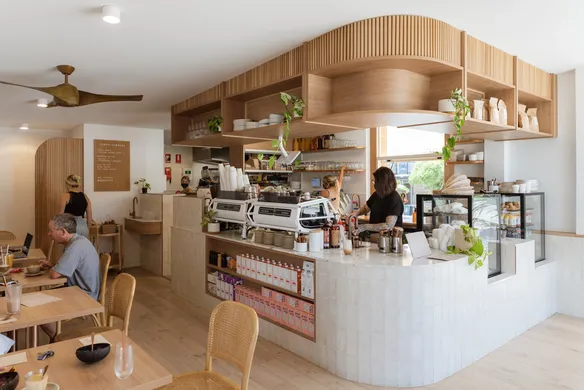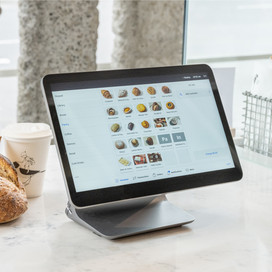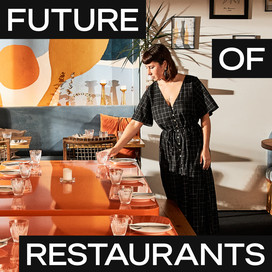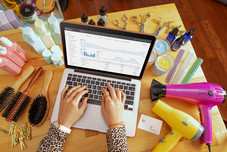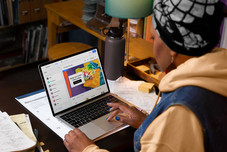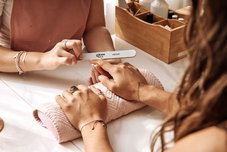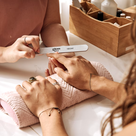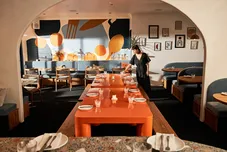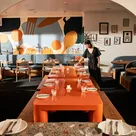Table of contents
Australians are known for many things, our love for good coffee is one of them (especially if you reside in Melbourne). As coffee culture grew from city streets to suburban hubs, many Aussies have made the jump from 9-5 to brewing coffee full time. Take Dave, a Square Seller from Convoy Commune who has created a bustling community hub cafe in Newcastle, who says he has never looked back.
The cost of opening a cafe in Australia can vary depending on your vision, location and size. Here are a few factors worth considering as an indicator of ballpark costs that may help your initial budgets.
Licences, permits and certificates
Although it may sound easy to find a space, purchase the necessary equipment and open shop, there are important licences and permits you require before flipping the open sign. We have summarised these below.
Business licence
You have to register your cafe with the local council in order to obtain a business licence. Full details of the licence requirements and any costs involved can be found at the Australian Business License and Information Service. Once you have a licence, you can operate within the food safety guidelines set out under Australian law and under the relevant legislation.
Certificates
In addition to a general business licence, anyone starting a cafe needs to apply to their local council for a number of certificates. The specific paperwork needed varies from place to place, but you’ll probably need to obtain the following:
- Zoning certificate
- Compliance certificate
- Occupation certificate
- Fire safety certificate
How much these certificates cost in total varies from cafe to cafe, depending upon the state you’re starting up in and the precise nature of your requirements. As a general rule, the cost can fall somewhere between $50 and upward of $500.
Food licences
One of the most important pieces of paperwork you need when starting up a cafe is the food licence. The precise requirements of a food licence varies across different states, and is also impacted by the size of the venue you wish to operate. The best way to find out exactly what you need to do to comply – and whether there is a cost involved – is to visit the local government website of the state in which you plan to operate. Links for each state are available at:
- Australian Capital Territory
- New South Wales
- Northern Territory
- Queensland
- South Australia
- Tasmania
- Victoria
- Western Australia
Miscellaneous licences
Depending upon the nature of your cafe, you may need to apply for other licences. A good example, and one which is fairly widespread, is a music licence if you plan to play tunes in your cafe, which is fairly likely given the need to create a welcoming ambience. The cost of a music licence is based upon the size of your cafe, and could range from $210 per year to as much as $1,700 per year.
Cost of acquiring a commercial space
In simple terms, there are two options to consider here – buying or renting:
Buying a venue
Buying a venue for your cafe has some advantages but, just like renting, it incurs ongoing expenses in the form of monthly mortgage payments. The biggest benefit of buying a venue outright is felt if you purchase a venue which is already operating as a cafe or other type of food service establishment. If this is the case, then you can assume that the venue has infrastructure in place such as toilets, running water and a floor plan for cafe service. When looking for the right venue to buy, bear in mind that you need to pay a deposit which likely will be a minimum of 20% of the overall cost, and that monthly outgoings in the future include mortgage repayments which can shift with variations in the overall interest rates.
Renting
If you opt to rent a property instead of buying, then there’s a chance that you can rent an empty space at a rate lower than a mortgage repayment, but then pay to equip it to operate as a cafe. As a rough guide, operate on the assumption that the rent you pay is a maximum of 15% of your annual income, as anything higher could place undue pressure on cash flow.
A deposit is refundable if and when you exit the lease and usually amounts to between 1 and 3 months of the rent you pay. The vast majority of commercial leases are offered over the longer term, usually for a minimum period such as 5 years. In terms of budgeting, it pays to have a contingency fund amounting to 6 months of the rent being charged set to one side, to draw from while you establish your cafe start-up.
Renovations and interior design
Opting to purchase or rent a venue which has already been operating as a food service business hugely reduces your budget for renovations and interior design. A large cafe start-up cost is always driven by the desire to create a space with its own unique ambience and feel, since the right atmosphere is every bit as important to success as the quality of the food and drink being served. An aesthetic transformation of an existing space – involving repainting, replacing or upgrading fixtures and perhaps laying a new floor – could cost between $5,000 and $10,000, depending upon the size of the cafe.
If the property has previously operated as another kind of business, you may need to spend more to turn it into a functioning cafe. Factors such as location and availability of venues might mean you opt to go for a venue which is little more than a shell. If so, budget for renovations which might include a major redesign and practicalities such as installing a kitchen and toilets. For a small to medium-sized cafe, the cost of this level of renovation may be more than $50,000 and for larger spaces, upward of $100,000.
Food and drink equipment
One of the highest cafe start-up costs is likely to be purchasing the equipment you need to operate as a cafe. Costs for this equipment vary depending upon the quality and quantity required. A commercial coffee machine ranges in price between $2,000 to upwards of $12,000. Equipment is needed to prepare food and drink, store your raw ingredients, wash the crockery and cutlery and clean the cafe. Depending upon the size and type of cafe, and the amount of money you have, your equipment could include the following:
Coffee equipment
Brewing and serving coffee is big business, and customers expect to be offered a full range of options, so your coffee making equipment may need to include grinders, blenders and espresso machines.
Kitchen equipment
Depending on your service requirements, your kitchen equipment requirements may vary, but it’s highly likely to include ovens, fridges, freezers, microwaves and toaster ovens.
The cost of kitchen equipment varies depending upon the brand, size and capability. As a rough guide, expect to pay the following prices:
- Coffee grinder – $950 to $2,000
- Blender – $400 to $2,000
- Fridge – $1,000 to $8,000
- Toaster – $200 to $2,000
- Espresso machine – $2,500 to $13,000
- Dishwasher – $2,500 to $9,000
- Microwave – $500 to $2,000
Service equipment
As well as equipment for preparing your food and drink, you need serving items. This may include utensils, plates, bowls, trays and glassware as well as recyclable takeaway cups and containers.
Storage
Your outright costs include the installation of storage areas: shelves, cupboards, maybe display cabinets, and containers in which to store dishes and ingredients.
Inventory
Don’t forget your stock! Although your menu may fluctuate with the seasons, you will always need the staples like milk, coffee beans and bread.
Business tools
As well as the equipment needed to prepare and serve food and drink, investing in the right business tools upfront can help ensure your cafe operates in a streamlined and efficient manner.
The good news for anyone seeking to keep their cafe start-up cost as low as possible is that Square provides business tools designed with cafes in mind. Here are our top recommendations.
Point Of Sale Software
A stellar Point of Sale (POS) software makes it easy to take payments in person, online and for takeaway or delivery. It also allows you to manage your inventory, access important reports about your business performance and track your staff performance.
A website is now a necessity for any cafe. Square Online allows you to set up a simple and easy-to-use online platform to compliment your in person offering.
A loyalty program helps you reward your loyal coffee lovers and plays a huge role in creating a sense of community amongst your customers.
Managing many employees – from chefs to wait staff and cleaners can be a delicate balancing act. Rostering software makes it easy to keep track of who should be working and when. It also helps empower your team to clock in and out quickly and simply.
Hardware
EFTPOS stands for Electronic Funds Transfer at Point of Sale, and refers to the hardware which enables your customers to pay for their food and drink, as well as processing those payments in a fully integrated manner. At Square we offer a range of payment devices tailored to suit the exact requirements of your cafe.
Other basic items you may need to run your kitchen smoothly may include a receipt printer and a cash drawer.
Marketing costs
The cost of marketing a business is often overlooked, but even the best cafe in Australia will fail if prospective customers don’t hear about it. As well as the traditional marketing methods such as placing ads in local publications, and printing and distributing leaflets, a modern cafe business needs to invest in a dedicated website (see above) and a social media presence.
![]()

